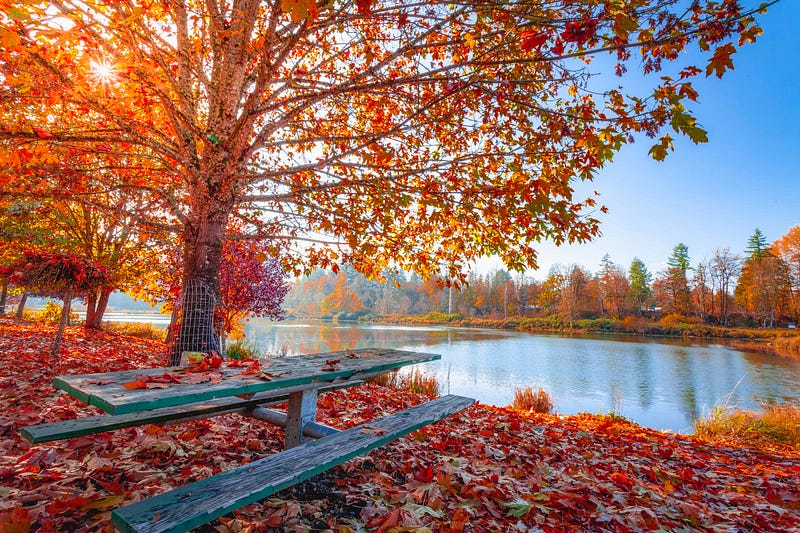The Enigmatic Transformation of Autumn Leaves
Written on
Chapter 1: The Colors of Change
As autumn arrives, marked by shorter days and a crisp breeze, leaves begin to showcase their stunning fall colors. This seasonal shift is a natural process, where Mother Nature effortlessly sheds what is no longer needed, making way for renewal. She prepares for a period of rest and reflection, fostering a serene environment where remnants of a vibrant summer enrich the soil, nourishing the earth ahead of winter's quiet dormancy.

But what drives this instinctive cleansing by nature? Why do the leaves undergo such a spectacular transformation?
Section 1.1: The Science Behind Leaf Colors
Leaves are composed of plant cells that contain organelles known as chloroplasts, which are crucial for converting light into energy. The most abundant pigment within these chloroplasts is chlorophyll, which gives leaves their green hue. This pigment plays a vital role in photosynthesis, allowing plants to harness sunlight to create energy.
As autumn approaches and sunlight diminishes, trees begin to reduce chlorophyll production. This decrease allows other pigments, such as carotenoids, to emerge, revealing vibrant oranges and yellows. Interestingly, anthocyanins, responsible for red hues, are produced during the fall, adding to the colorful display.
Why Do Leaves Change Colors in the Fall? | Biology for Kids | SciShow Kids - YouTube
Bright, sunny days during fall yield the most vivid colors, as the remaining pigments still rely on sunlight. This transformation is a testament to nature's artistry, with each tree exhibiting its unique chemical composition and seasonal changes.
Section 1.2: Energy Redistribution and Survival
As winter draws near, the energy generated through photosynthesis is transferred from the leaves to the trunk, where it is stored for the colder months ahead. This energy reserve allows the tree to sustain itself until longer days and warmer temperatures return, promoting new growth.
When old leaves fall, they not only protect the tree but also enrich the ground as they decompose. Some leaves turn brown quickly, dissolving into the earth as the weather shifts. This prompt change is often due to tannins, particularly noticeable in oak trees and beech trees, and can occur abruptly when cold weather strikes unexpectedly.
Chapter 2: Embracing Change
The shifting colors of leaves serve as a powerful reminder that change is both natural and essential. Just as nature transforms, we too can embrace the idea that letting go can lead to renewal and growth.
Why do leaves change color in the fall? - YouTube
Nature’s cycle encourages us to reflect on what we can release to welcome new opportunities and experiences.
More from Susie…
- Why I Drink Chlorophyll on a Daily Basis: An affordable way to enhance immunity and overall health.
- What Can I Let Go Of to Allow It To Be Easy?: Breaking free from limiting beliefs by envisioning a brighter future.